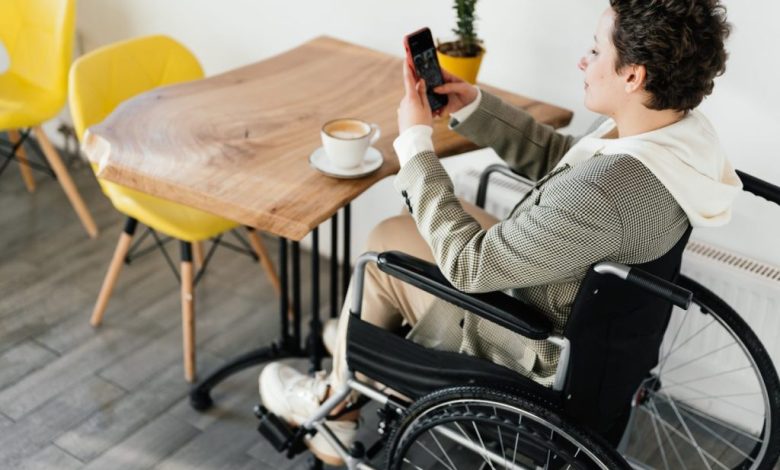5 Tips That Can Make Your Move Easier If You Have a Disability

Last Updated on February 17, 2024 by Ali Hamza
Image via Pexels
According to the CDC, one in four people in the US aged 15 and older have a disability. What’s more, any common activities, such as moving, can be challenging due to a lack of accommodations. If you have a disability and are planning to move to a new home, these tips shared courtesy of Write Miner can make the process easier.
1. Purchase an Accessible Home
The first thing you should do when considering buying a new home is to evaluate the local market conditions in your prospective area. Local markets can diverge quite a bit from national real estate trends. As such, you’ll want to consider if a given market is in a condition that makes purchasing a home a good decision.
When shopping for a new home to purchase, it is important to consider how well that home meets your needs. Your new home should be easy to navigate, access the restroom, and complete daily living activities. It can be helpful to use an accessibility checklist when comparing properties.
Depending on the availability of accessible housing options, you may not be able to find a home that meets all of your needs. This is especially the case if you’re purchasing a home on an “as is” basis. If this is the case, consider hiring professionals to modify the home. In that case, a mortgage could provide the funds you need for the modifications, but make sure you take some time to understand the nuances of how mortgages work if you haven’t already.
If you are a first-time homebuyer, you may need assistance navigating the home-buying process. A real estate agent who is familiar with the needs of people with disabilities can be a big help. To get a mortgage, it is a good idea to check your credit score and gather any paperwork your lender might need to see. Keep in mind that mortgage insurance will usually be required if you’re putting less than 20 percent down.
If you need financial assistance to purchase or modify a home, there are grants available to make the process more affordable. In addition, many accessibility-related upgrades are tax deductible, so investigate these options before pursuing renovation.
2. Familiarize Yourself With Renter’s Rights
If you will be renting rather than buying, make sure you know the rights renters have in the location you are moving to. Renters’ rights vary considerably from state to state. It is particularly important to ensure your landlord will permit you to modify your rental home to meet your accessibility needs. In general, as Leenan Property Management notes, you have the right to request accommodations, such as allowing a service animal to live with you in a rental that doesn’t allow pets; however, these accommodations must be approved by the landlord.
3. Make Sure You Can Take Your Assistance With You
If you are receiving some form of disability assistance and you are moving to another state, make sure you will be able to either take it with you or obtain an equivalent service in your new home. Social Security Disability Insurance and Supplemental Security Income are federal programs that don’t change from state to state. However, any state services or private insurance that you have may be affected by your move.
4. Install Assistive Smart Tech
Adding smart home technology to your living space can be incredibly beneficial for those living with disabilities. With just a few simple devices, such as voice-activated assistants, automated lighting and temperature controls, and smart locks and security systems, individuals can have greater independence and control over their daily routines.
For those with mobility issues, smart tech can make it easier to navigate their home and complete daily tasks, while voice-controlled devices can offer hands-free communication and entertainment. You can even find helpful troubleshooting resources online so that when your tech glitches, you aren’t left without the resources you need.
5. Prepare for Your Move
MY MOVE points out that the better you prepare for your move, the less stressful the moving day will be. Create a checklist. Get rid of anything you don’t need. Don’t make your boxes too heavy and schedule in advance so you can pack and unpack a little at a time. Working with a professional moving company that has experience with people with disabilities can help ensure a smooth process.
Bonus Tips for Sellers: Business Cards and More
Here are some extra suggestions for those of you who will be selling your home, since you’re going to have a bit more on your plate. If you plan on marketing your home, whether in conjunction with a real estate agent or on your own, professionalism is the key. It’s also a good idea to hire a professional photographer to take great-looking listing photos of your property. Lastly, put together a great-looking business card that you can hand out to potential buyers. You can create free business cards using online tools that let you customize
Find Strategies for a Successful Move
Moving when you have a disability isn’t that different from any other move; however, it is important to keep your accessibility needs in mind. By researching mortgages, seeking assistance, and working with the right professionals, you can overcome any challenges and find an accommodating new home for yourself.



